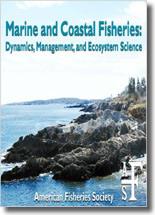The pink shrimp Farfantepenaeus duorarum, one of the commercially important Penaeidae, reproduces offshore of the southwest Florida (SWF) shelf. Larvae migrate to nursery grounds in estuarine Florida Bay. Using a numerical approach, we investigated the role of spawning location, larval traits, and physical forces on the transport of pink shrimp larvae. First, the Regional Oceanic Modeling System that is based on tides, air—ocean fluxes, and freshwater flows was used to simulate the SWF shelf oceanography. The model replicates the tides, winds, salinity, currents, and seasonality of the shelf. Secondly, the Regional Oceanic Modeling System was coupled offline with the Connectivity Modeling System, in which virtual larvae were released near the surface from two spawning sites, Dry Tortugas and Marquesas, and tracked until the time for settlement (about 28–30 d). Virtual larvae moved vertically in the water column following ontogenetic behaviors previously observed in the field: diel vertical migration (DVM) and selective tidal stream transport (STST). Lagrangian trajectories indicated that migration paths changed radically between summer and winter during model years (1995–1997). Maximum settlements occurred in summer by larvae crossing the SWF shelf, while the lowest settlement occurred in winter by larvae moving through passes in the Florida Keys. Modeling results demonstrated an effective east-northeast transport across the SWF shelf during summer as a result of the tidal currents, the subtidal currents, and the combined DVM and STST behaviors. The current phase captured during the initial DVM period was critical to determine the direction in which larvae move, favorable (east and northward) or unfavorable (south and westward), before the STST behavior captures the eastward tidal current that brings larvae to the nursery grounds. Unfavorable currents were driven by the summer easterlies and low salinities at the coast. Results indicated that Marquesas is the more effective spawning ground, with 4.5 times more likely settlement of originating larvae compared with Dry Tortugas. Model-estimated seasonal settlement patterns concurred with postlarval influxes previously observed at Florida Bay boundaries.
How to translate text using browser tools
1 January 2015
Modeling Larval Transport and Settlement of Pink Shrimp in South Florida: Dynamics of Behavior and Tides
Maria M. Criales





